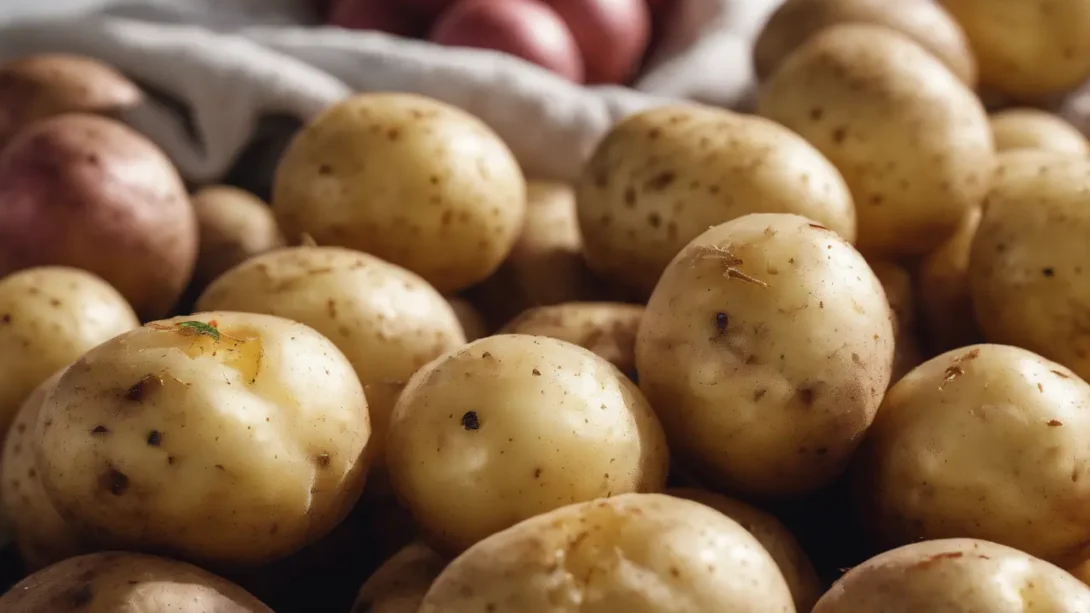Growing potatoes in the warm, subtropical climate of Florida offers a unique set of challenges and rewards for gardeners. Unlike the cooler, temperate regions where potatoes are traditionally grown, Florida’s year-round warmth necessitates special considerations for variety selection, planting times, and care techniques. This guide will walk you through everything you need to know to successfully grow potatoes in the Sunshine State, from understanding the local climate to selecting the right potato varieties.
Florida’s Climate
Florida’s climate is characterized by its warmth and humidity, with distinct zones that can affect gardening schedules and practices. The state is divided into USDA hardiness zones 8 through 11, which means gardeners can enjoy a long growing season but must also contend with the challenges of intense heat and humidity, especially during the summer months.
The best times to plant potatoes in Florida are during the cooler parts of the year. In North and Central Florida, planting can begin in late January to February, while in South Florida, the planting window shifts to October through December. These planting times help avoid the peak heat of summer, giving potatoes the cooler temperatures they prefer for initial growth.
Florida gardeners face unique challenges, including managing soil moisture without encouraging rot and combating pests and diseases that thrive in warm, humid conditions. Understanding your local climate and preparing accordingly is crucial for a successful potato crop.
Choosing the Right Potato Varieties
Selecting potato varieties that can tolerate heat and have a resistance to common diseases is vital for Florida gardeners. Look for heat-tolerant varieties that can withstand some of the temperature extremes experienced in the state. Some recommended varieties for Florida include ‘Yukon Gold’, ‘Red Pontiac’, and ‘Sebago’.
It’s also wise to choose a mix of early, mid, and late-season varieties to extend your harvest period. Early-season potatoes typically mature in 70-90 days, mid-season in 90-120 days, and late-season varieties can take 120 days or more. By planting a variety, you can enjoy fresh potatoes over a longer period.
Quality seed potatoes can be sourced from reputable garden centers or online suppliers that offer certified disease-free tubers. It’s important to start with healthy, disease-free seed potatoes to reduce the risk of introducing pathogens into your garden.
Preparing Your Garden
Choosing an ideal planting site is crucial for potato success. Potatoes need full sun, at least 6-8 hours of direct sunlight per day, and well-draining soil. In Florida’s sandy soils, amending with compost or well-rotted manure can improve soil structure and moisture retention.
Before planting, ensure your soil is loose and well-draining to prevent waterlogging, which potatoes dislike intensely. You may need to raise your beds or incorporate generous amounts of organic matter to improve drainage. A soil pH between 5.0 and 6.0 is ideal for potatoes, so consider testing your soil and adjusting accordingly.
Planting Potatoes in Florida
Once you have selected the appropriate varieties and prepared your garden bed, it’s time to plant your potatoes. Follow these steps for the best results:
- Cutting Seed Potatoes: If your seed potatoes are large, cut them into pieces, ensuring each piece has at least one or two eyes. Allow the cut pieces to cure for a day or two until a callous forms over the cut surfaces. This step helps prevent rot once planted.
- Planting Depth and Spacing: Plant seed potato pieces about 3 inches deep in the soil, with eyes pointing upwards. Space them about 12 inches apart in rows that are 3 feet apart. This spacing allows for adequate air circulation and room for growth.
- Succession Planting: To extend your harvest, consider succession planting. Plant a new round of seed potatoes every two weeks during the planting window. This method ensures continuous harvests and reduces the risk of losing the entire crop to pests or disease.
Proper planting is crucial for developing a robust root system and ensuring your potatoes have the best start possible. After planting, gently cover the seed potatoes with soil and water them in well.
Care and Maintenance
Caring for your potatoes involves consistent watering, mulching, and fertilization to encourage healthy growth and maximum yields.
- Watering: Potatoes need a consistent supply of water, especially once the tubers start to form. Aim for at least 1 inch of water per week, either from rainfall or supplemental watering. Avoid overwatering, as soggy soil can lead to root rot and other diseases.
- Mulching: Applying a thick layer of mulch around your potato plants can help conserve soil moisture, regulate soil temperature, and suppress weeds. Organic mulches like straw or grass clippings are ideal choices. As the plants grow, you can also “hill” them by piling soil or mulch around the stems to cover the developing tubers and prevent them from being exposed to sunlight, which can cause them to turn green and become toxic.
- Fertilization: Potatoes benefit from fertilization at planting and again when tubers begin to form. Use a balanced fertilizer or one slightly higher in potassium to encourage tuber development. Avoid over-fertilizing with nitrogen, which can lead to lush foliage at the expense of tuber growth.
Pest and Disease Management
Pests and diseases can pose significant challenges to Florida potato growers. Common pests include the Colorado potato beetle, aphids, and wireworms, while diseases like early and late blight, scab, and fusarium wilt can also affect crops.
- Preventative Measures: Practice crop rotation to prevent disease buildup in the soil, and select disease-resistant varieties when possible. Regularly inspect your plants for signs of pests or disease and take action immediately to mitigate any issues.
- Organic and Chemical Controls: Use organic pest controls like neem oil, insecticidal soaps, or beneficial insects as a first line of defense. For diseases, applying fungicides may be necessary, especially in humid climates. Always follow the manufacturer’s instructions for any chemical treatments.
- Cultural Practices: Remove and destroy any diseased plants or tubers to prevent the spread of pathogens. Keeping your garden clean and free of debris can also reduce pest and disease problems.
Harvesting and Storing
The moment your potato plants begin to flower and then wilt marks the initial sign that your potatoes are nearing readiness for harvest. This section will guide you through the harvesting process and best practices for storing your potatoes to maximize their shelf life.
- Signs of Readiness: Small, new potatoes can be harvested as soon as the plants flower. For larger, mature potatoes, wait until the foliage has died back completely. This usually occurs a few weeks after flowering ends.
- Harvesting Technique: Carefully dig around the base of the plant with a spade or fork, lifting the tubers from the soil. Be gentle to avoid bruising or damaging the potatoes, which can affect their storage life.
- Curing Potatoes: Once harvested, let your potatoes cure in a dry, well-ventilated area away from direct sunlight for about one to two weeks. Curing helps the skins to harden, preparing them for storage and extending their shelf life.
- Storing: After curing, store your potatoes in a cool, dark, and well-ventilated place. Ideal storage temperatures are between 45-55°F (7-13°C). Avoid storing potatoes in the refrigerator, as temperatures below 40°F (4°C) can turn the starch in potatoes into sugar, affecting their taste and cooking quality.
- Inspection: Regularly check stored potatoes for signs of spoilage, such as soft spots, sprouting, or mold. Remove any compromised potatoes to prevent them from affecting the rest.
Troubleshooting Common Problems
Even with careful planning and maintenance, gardeners may encounter issues with their potato crops. Here are a few tips for troubleshooting common problems in Florida:
- Excessive Heat: Mulching can help keep the soil temperature stable. If temperatures soar, consider providing some shade to protect the plants during the hottest part of the day.
- Pest Infestations: Early detection and intervention are key. Use traps, barriers, or biological controls to manage pests before they cause significant damage.
- Diseases: Ensure good air circulation around your plants and practice crop rotation to prevent disease buildup in the soil. Remove and destroy any affected plants promptly.
Conclusion
Growing potatoes in Florida can be a rewarding endeavor with the right preparation, variety selection, and care. By understanding the unique climate challenges, choosing suitable potato varieties, and following best practices for planting, maintenance, and harvesting, you can enjoy a bountiful potato harvest. Remember, gardening is a learning process. Each season provides new opportunities to refine your techniques and achieve even greater success in your Florida garden.




